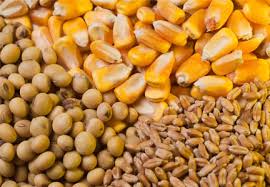On Monday, Chicago wheat, corn, and soybeans experienced a decline, driven by a sudden drop in global financial markets.
Despite a weaker dollar, which typically boosts U.S. export sales, grain and oilseeds still fell. Positive crop outlooks in the U.S. further contributed to the downward trend.
By 1123 GMT, the most actively traded wheat on the Chicago Board of Trade had dropped 2.4% to $5.25-3/4 per bushel. Corn fell by 1.2%, dipping below the $4.00 mark to $3.98-1/4 per bushel, while soybeans decreased by 0.5% to $10.21-1/4 per bushel.
Global stock markets also took a hit on Monday as fears of a U.S. recession prompted investors to avoid riskier assets. There is speculation that interest rate cuts might be needed to support growth, leading to a drop in the dollar against major currencies.
Matt Ammermann, a commodity risk manager at StoneX, commented, “The significant sell-off in global equity and financial markets today has also impacted wheat, corn, and soybeans, as a risk-averse sentiment dominates. This has overshadowed the typically supportive effect of a weaker dollar on U.S. grains and soybeans.”
He added that the market has shifted focus to the potential risk of a U.S. recession, with concerns that financial investors may initiate new short positions.
U.S. weather forecasts for the week indicate mostly dry conditions, favorable for the final stages of the winter wheat harvest. The U.S. Department of Agriculture (USDA) is set to release a report on U.S. crop progress and conditions later on Monday.
“U.S. weather appears non-threatening to crops this week, which is another factor contributing to the weakness,” Ammermann noted. “There is growing anticipation that the USDA’s crop conditions report will present a positive outlook for U.S. corn and soybeans.”
Meanwhile, the EU wheat harvest, which has faced delays due to summer rain, is showing signs of progress. By July 29, French farmers had harvested 67% of this year’s soft wheat crop, up from 41% a week earlier, though still lagging behind the usual pace due to rain disruptions.




